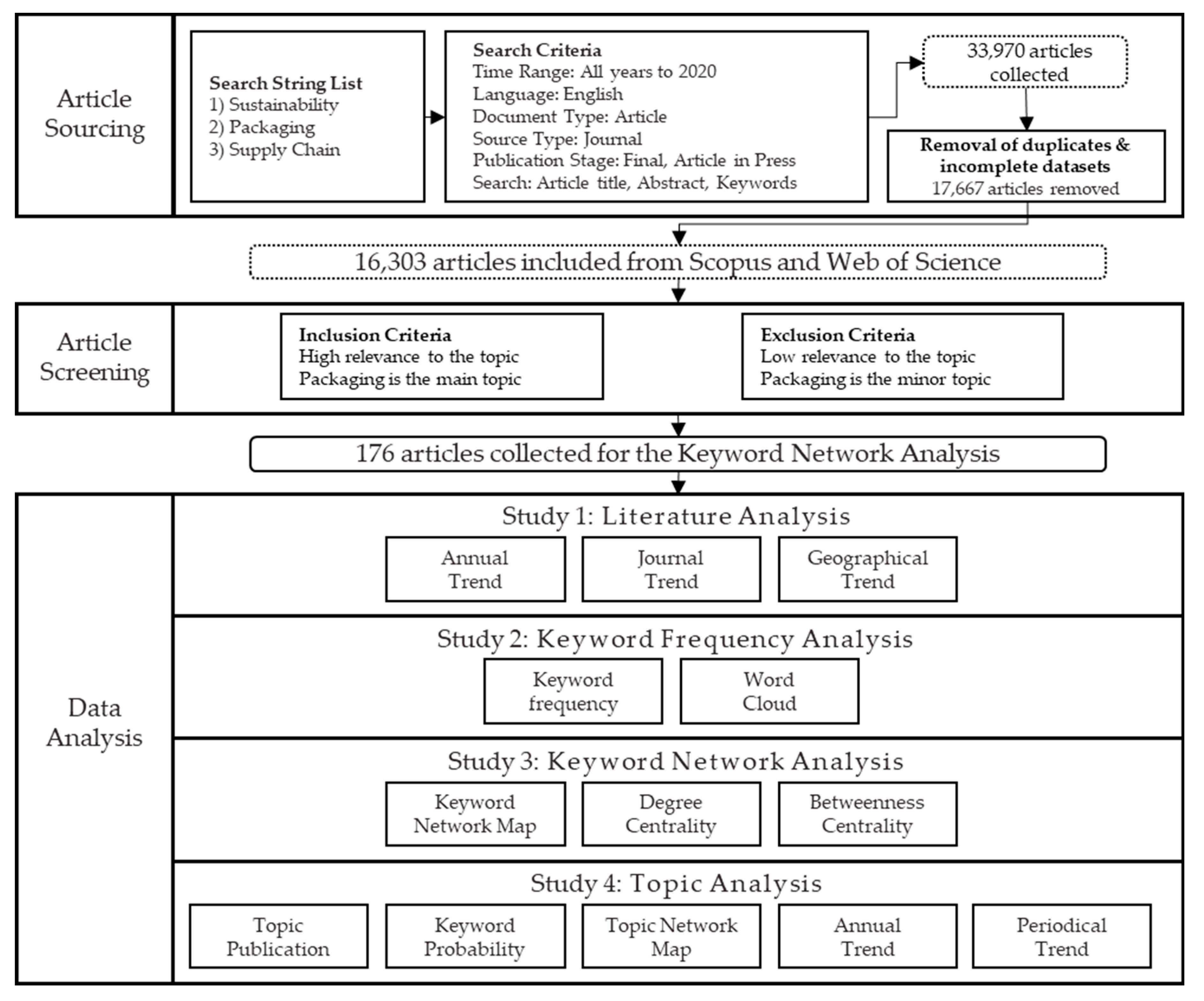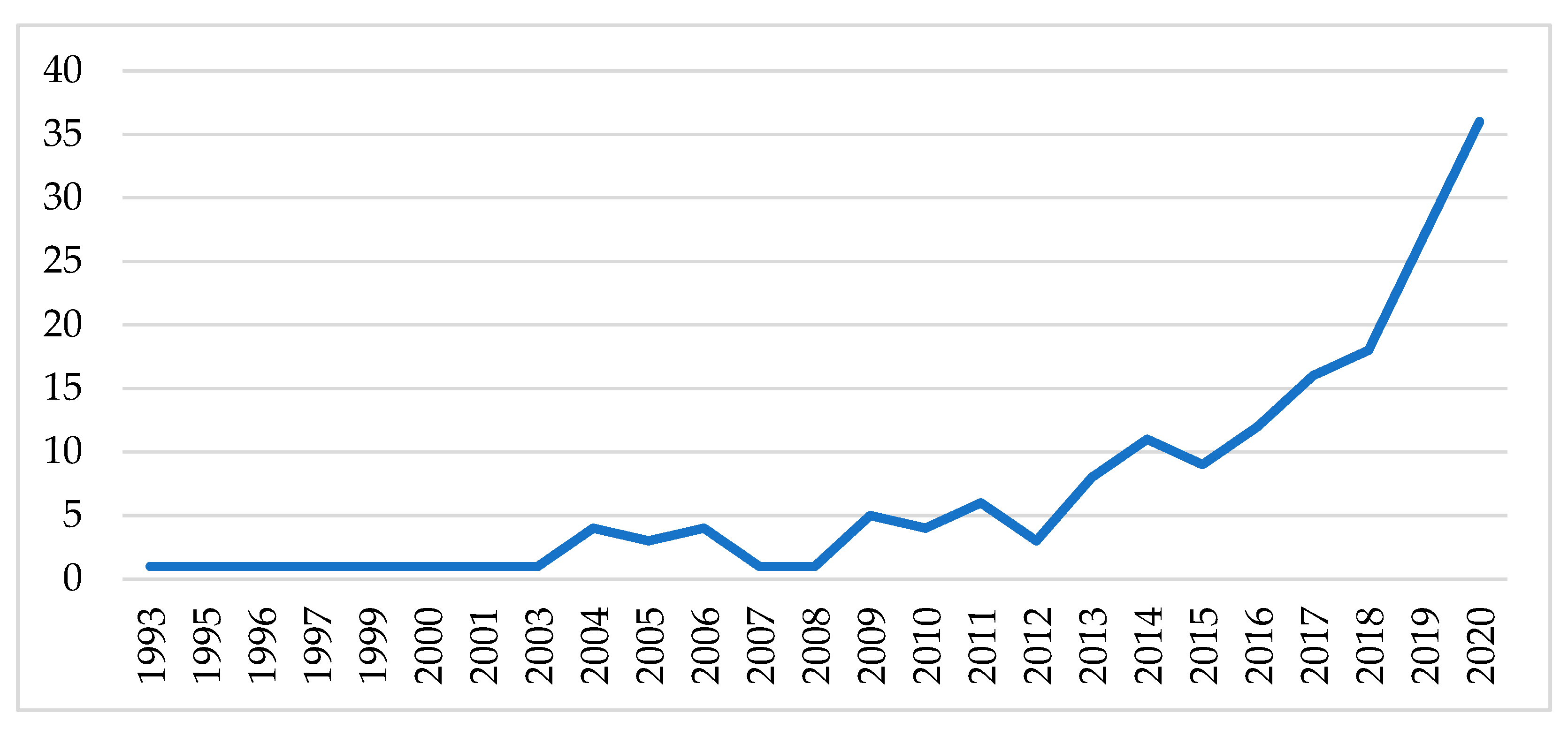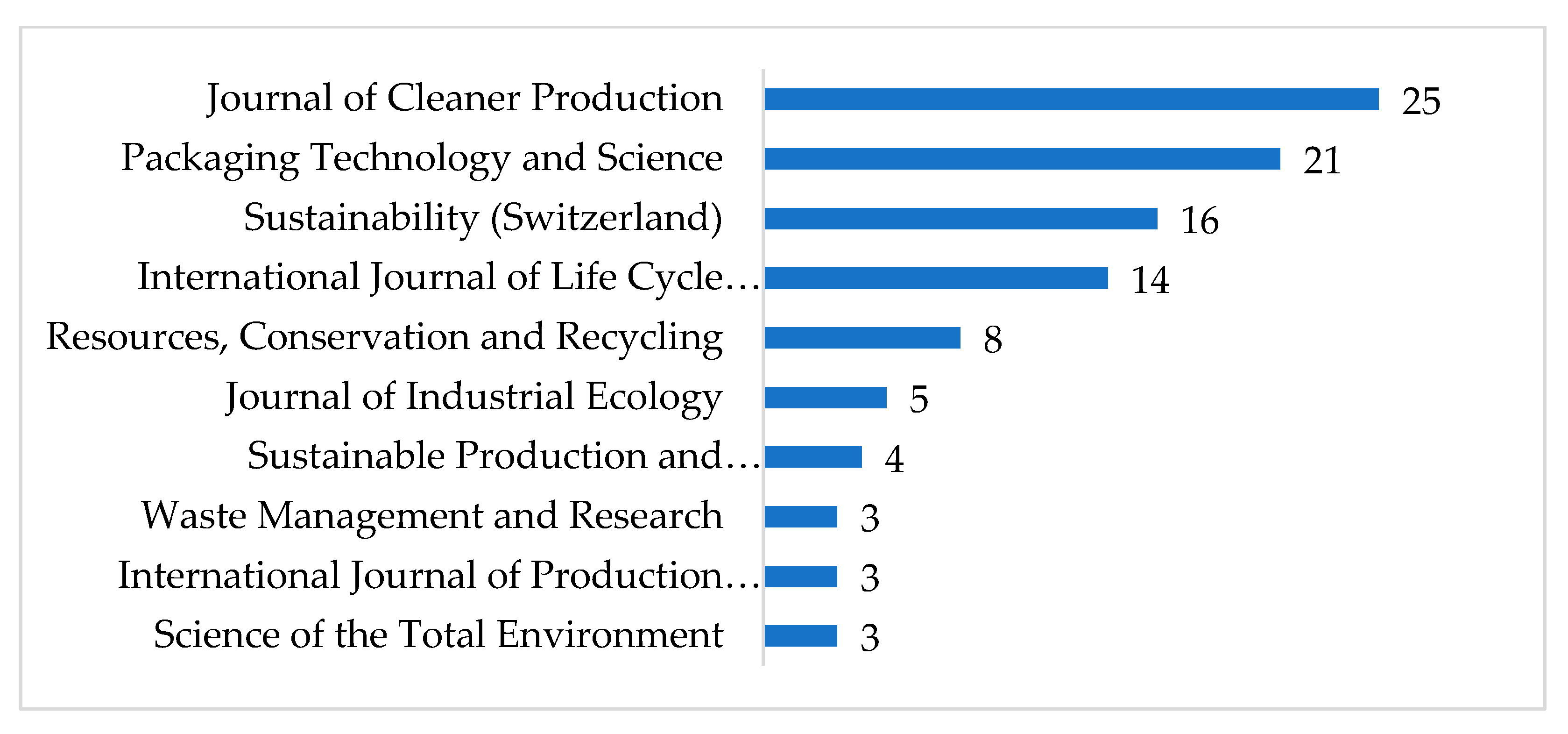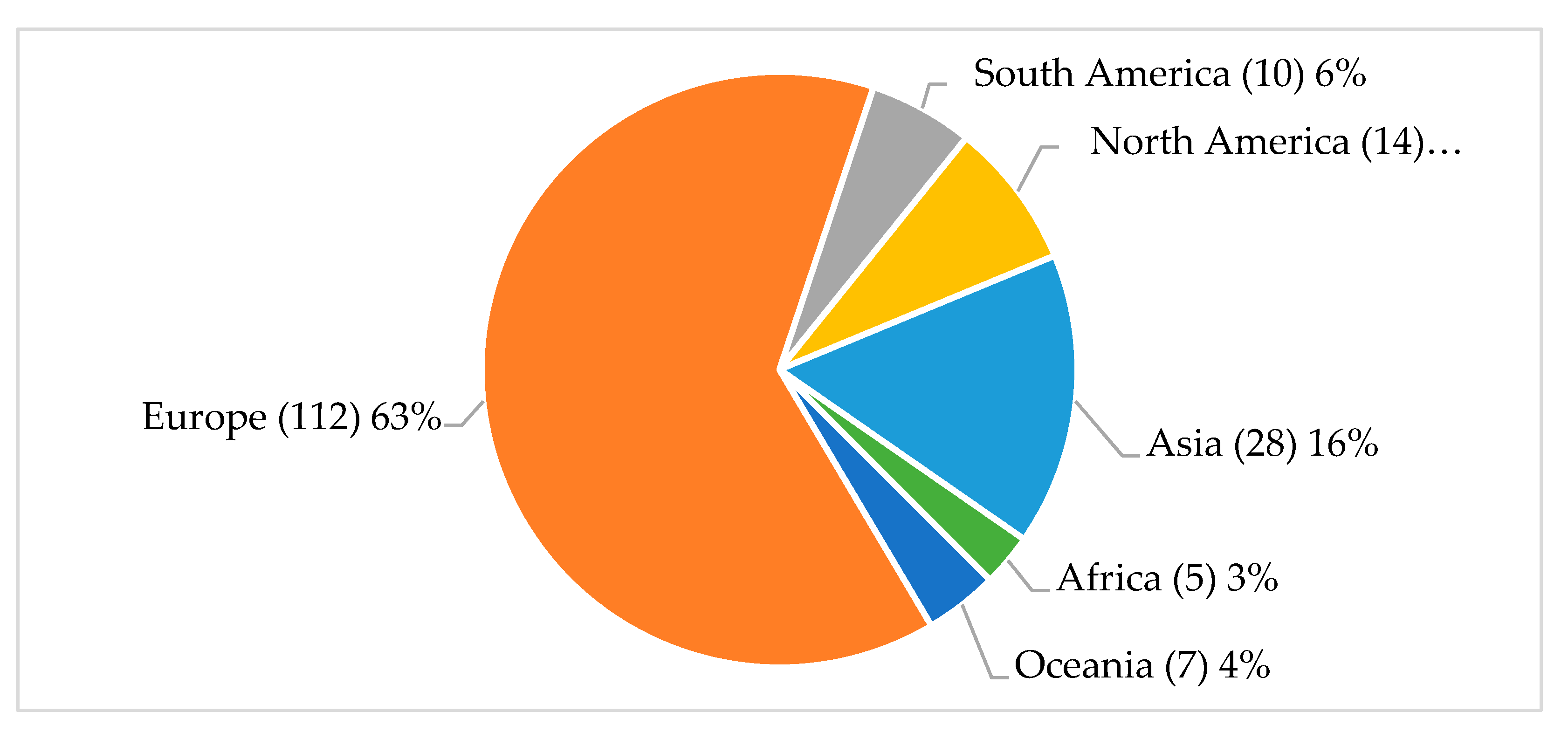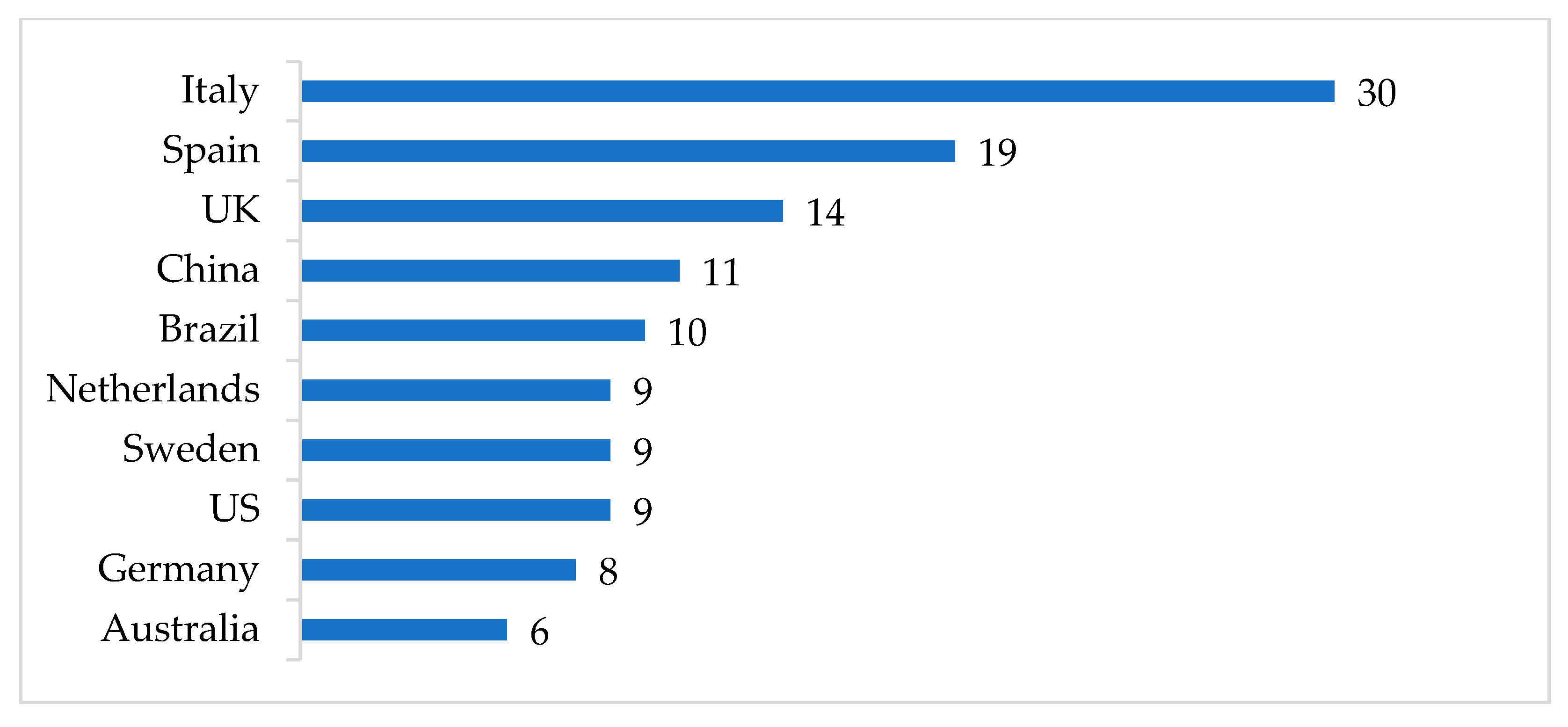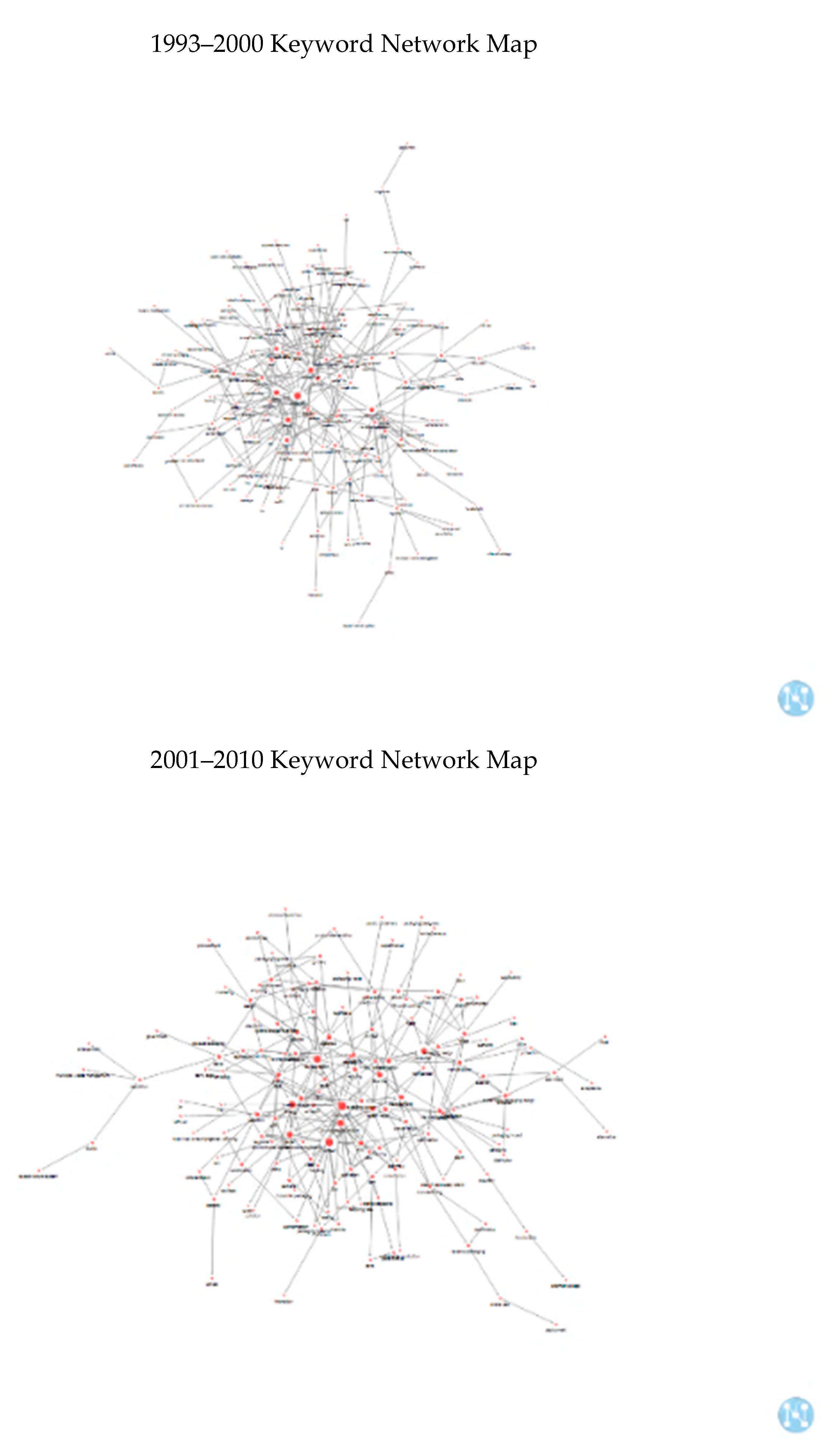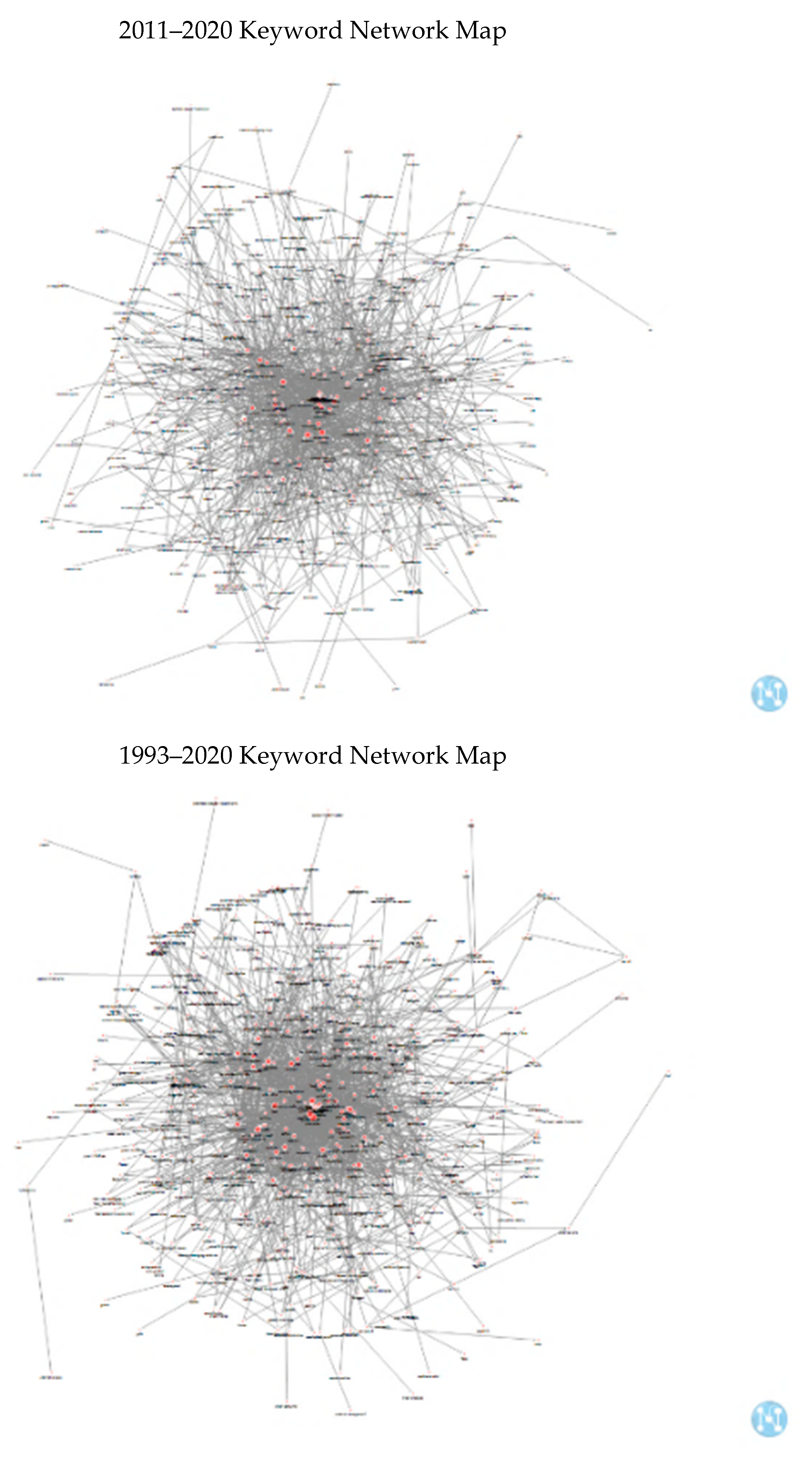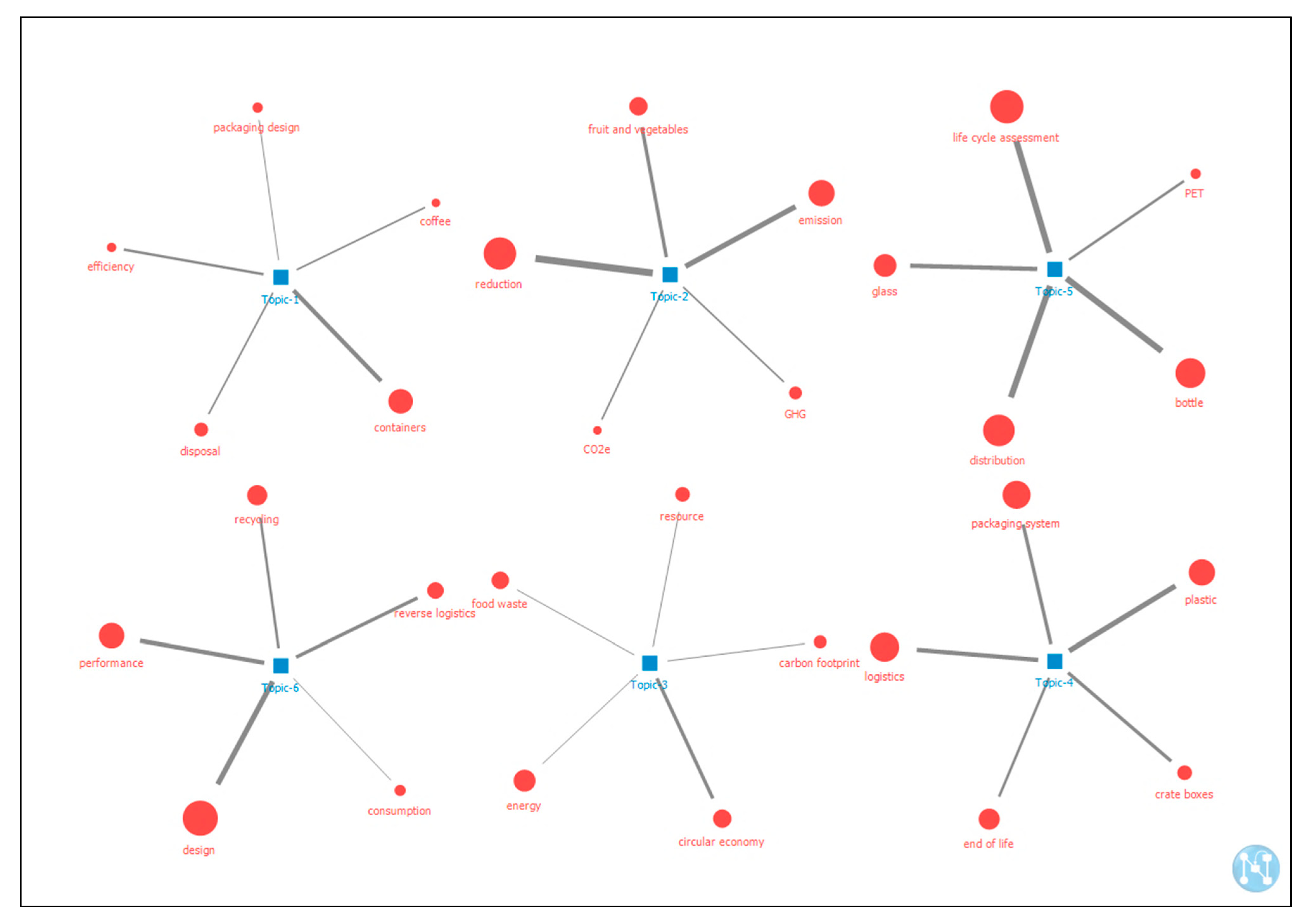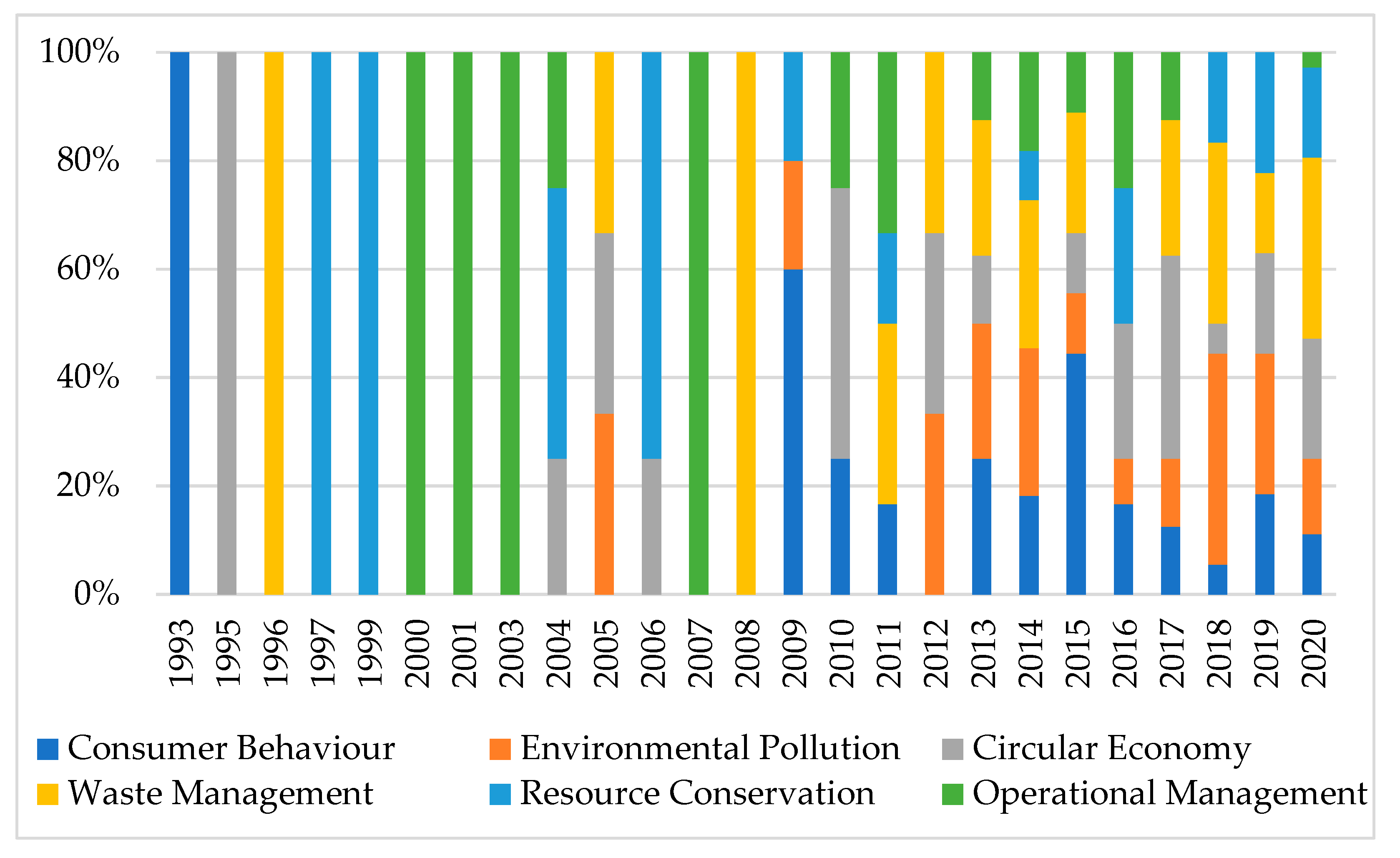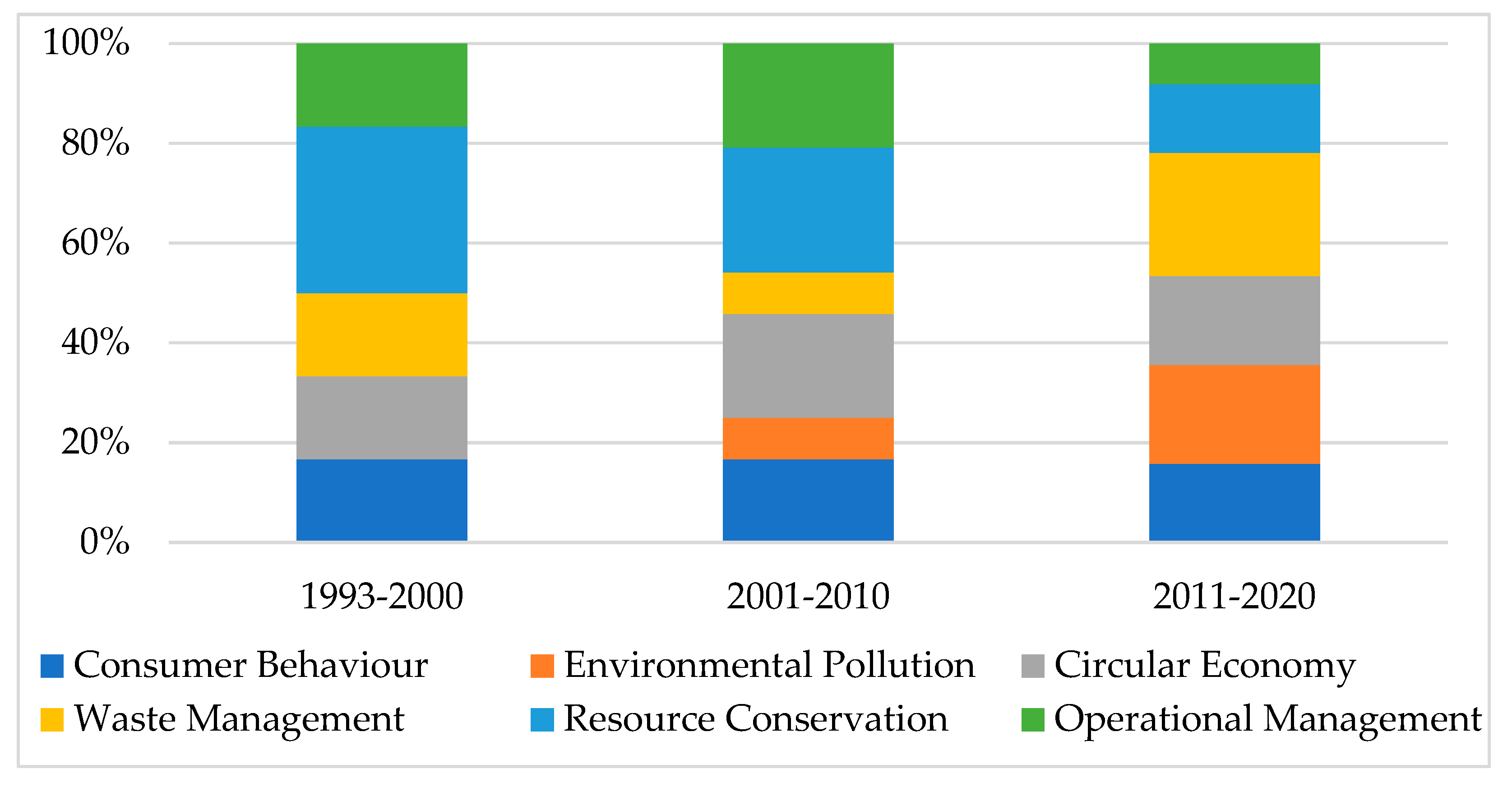1. Introduction
Packaging development has initiated along with the need to transport and distribute goods, as often, the source of production and manufacturing differs from the point of end use, and therefore, the need for packaging has become adjacent with the processes and journey of products from point of origin and throughout the supply chain journey to point of consumption. The packaging industry has a significant impact on the environment and on cost efficiencies across supply chains, including packaging design development phase, materials procurement phase, and end of life treatment phase [
1]. Due to modern society’s dependence on packaging properties and function to protect and deliver products, it has often been regarded as a necessary evil, associated with waste and detrimental effects on the environment, as once the product has been delivered, the packaging itself has fulfilled its function and its life cycle has come to an end [
2]. Packaging significance has increased rapidly, along with civil society and urbanisation. The correlation between the latter and product distribution has had an immense effect on all industries, as has consumer consumption behaviour, and as such, a heavy burden on the environment [
3]. Packaging and sustainability share a two-sided relationship, as packaging may not be able to fulfil the inherent expectancy that is rooted in the notion of sustainability, due to it being designed to be disposed of once it has fulfilled its basic functions, thus, the energy required for producing packaging may not correspond with its relatively short lifespan [
4].
Sustainable packaging has been gaining momentum with stakeholders demanding change across all sectors to shift towards sustainable packaging alternatives [
5] and an increasing number of organisations moving towards creating an ethical packaging industry that considers the environment and social aspects of the industry, as well as considering the economic aspects of packaging [
6]. The importance of reducing packaging waste has gained renewed importance and awareness due to the emergence of COVID-19, which has seen an increase in demand for single-use products and packaging usage, resulting in excessive packaging waste [
7]. COVID-19 has been changing trends and readdressing health and safety concerns for the packaging industry, resulting in added pressure on industries to implement sustainable packaging initiatives in efforts to minimise waste and maximise product value within the supply chain in a strive towards Circular Economy (CE), which has become a focal point for stakeholders. Sustainable practices along the supply chain are realised as means to advance facilitating the 4R (reuse-reduce-recycle-renew) principles. However, these practices remain challenging with the conspicuous non-degradable plastic packaging remaining in the natural environment [
6]. Businesses and organisations are setting goals and commitments to adopt sustainable practices and invest in packaging optimisation to answer consumer demands and to further enhance packaging efficiency and effectiveness [
8]. Industry efforts to implement sustainable packaging necessitates a reassessment of packaging to address the aspect of sustainability [
9].
Systematic Literature Reviews (SLR) addressing Sustainable Packaging in Supply Chain Management have been extremely limited in comparison to the abundance of SLRs conducted in other studies [
10] including sustainability related topics. Some of the most current and noteworthy studies involving the term literature review include but are not limited to, one which provided a synthesis of the impact of consumer product use behaviour on the product lifespan analysing 109 rigorously selected articles that matched their inclusion criteria [
11], one which systematically reviewed meta-heuristic algorithms applied in sustainable supply chain management (SSCM) using 160 articles [
12], one investigating academic focuses in the field of sustainable supply chain management (SSCM) by adopting meta-analysis and systematic review on 362 studies published between the year 2004 and 2019 [
13], one which inspected research trends on logistics service quality with 98 papers [
14], one which utilised the same rigorous literature review procedures to identify key factors of SSCM in globalised supply chains [
15] and one which scrutinised SSCM practices in developing nations using selected papers [
16]. It is also worth noting that emerging technologies were chosen for this type of research, including drone scheduling [
17], blockchain [
18,
19] and information technology [
20]. Although different methods such as metaheuristics can still be efficient to contribute to sustainable development (e.g., [
21,
22]), the above studies demonstrated that SLR is a verified approach that has been actively applied in various fields [
23].
In the field of ‘sustainable packaging in supply chain management’, only one previous SLR has been identified, in which [
24] investigated ‘sustainable packaging in supply chain management’ by using qualitative methodology with data sourced from the two journal databases, EBSCO and ProQuest. The study identified 59 relevant articles published from 2003 to 2018, as the subject was concluded to have remained in the exploratory stage. In this study, ‘sustainable packaging in supply chain management’ research trends were analysed using keyword network analysis in order to enable a better understanding of previous and current research trends and focus. It is evident from previous research that systematic literature reviews in the field have mainly relied on qualitative methodologies, whereas this research utilises quantitative methodologies by utilising data mining techniques for analysis, including frequency analysis, keyword network analysis, and topic modelling, which have not been considered in any other previous study in the current field of investigation. The aforementioned particulars have been identified as a research gap and an area to expand ‘sustainable packaging in supply chain management’ research further upon. Accordingly, this exploratory study was conducted by utilising a quantitative analysis that employs SLR methodology in order to analyse published journal papers, sourced from SCOPUS and Web of Science (WoS), and to present a comprehensive overview of research focus conducted in the field by utilising the data mining software, NetMiner 4.0. Due to limited research in the field, as well as the lack of quantitative methods in previous research, this study has also employed interviews to enrich the discussion and analysis. In short, this study aims to analyse previous literature to provide a synthesis of the topics, and a deeper understanding of the current status and research trends in the scope of sustainable packaging in supply chain management. The analysis employs three analytical tools, including statistical analysis, keyword network analysis, and topic analysis.
The remainder of this study is structured as follows: In
Section 2, the literature review is thoroughly examined and in
Section 3, the pursued methods are introduced, whereby a systematic literature review process is developed.
Section 4 contains demonstration of the results discovered in the major analyses along with the in-depth interviews discussion in
Section 5. Theoretical and managerial implications are presented in
Section 6, and this paper concludes with a summary and potential directions in
Section 7.
2. Literature Review
Packaging refers to an enabling system designed to protect and ensure the effective and efficient transport, handling, and storage of a product throughout the supply chain [
25]. It has been playing a pivotal role in the economy by enhancing product safety and shelf-life, and therefore its definition is expanded further beyond a simple denotation of a material to contain and preserve the product to that of a coordinated system designed to prepare and protect goods along the supply chain while ensuring efficiencies and optimised sales [
26]. Sustainable packaging indicates that the packaging materials have been sustainably sourced and produced, and once it has served its purpose, holds the potential for resource recovery through recycling practices or by possessing compostable properties. Furthermore, social and economic principles are addressed in order to comply with guidelines for sustainability [
27]. Principles of sustainability to be met are often referred to as those presented by the Sustainable Packaging Coalition as follows: (1) Is beneficial, safe & healthy for individuals and communities throughout its life cycle, (2) Meets market criteria for performance and cost, (3) Is sourced, manufactured, transported, and recycled using renewable energy, (4) Optimises the use of renewable or recycled source materials, (5) Is manufactured using clean production technologies and best practices, (6) Is made from materials healthy throughout the life cycle, (7) Is physically designed to optimise materials and energy, (8) Is effectively recovered and utilised in biological and/or industrial closed-loop cycles. Sustainable Packaging Logistics (SPL), regarded as a progressive procedure designed to boost sustainability, assesses each phase of packaging in the supply chain [
28], as it incorporates sustainable packaging in SCM with an approach that considers concepts of development, logistics, packaging and sustainability altogether [
29].
Packaging systems influence supply chains costs across all segments, including information and order processing, inventory and lot sizing, warehousing, and transportation costs [
30,
31]. Operational management and SCM research have conventionally only provided consideration to packaging from an economic standpoint to enable cost-efficiencies in the supply chain [
32,
33]. The environmental and societal impact of packaging has attracted the interest of many supply chain stakeholders, as innovative packaging across supply chains necessitates collaboration among actors working towards sustainability [
30], if change in an organisation, internal and external, across supply chains is to be realised [
28]. ‘Sustainable packaging in supply chain management’ studies dedicated to addressing specific industries have been limited to agricultural, food, electronics and electrical industries. Thus, the need for more studies in environmentally intensive fields is needed [
34]. Research concentrated in the scope of environmental packaging design has been emerging as a field attracting vast attention, while research in the scope of ‘sustainable packaging in supply chain management’, and other fields such as consumer behaviour and waste management, has been limited despite the ever-growing significance of packaging in the supply chain [
35]. Nevertheless, in recent years, the number of studies focusing on sustainable product packaging systems in logistics and supply chain is gradually increasing [
36], as the overall volume of packaged goods continues to increase due to globalisation and e-commerce to further complicate logistic networks [
37].
3. Methods
The research methodology adopted in this study is SLR adapted and revised from previous recent research [
24,
34,
38,
39] with the introduction of network analysis methods that serve to explore future research direction and trends in novel fields [
40]. In the first stage of the research, a review of previous literature was conducted in order to establish the analysis framework. In the second stage, three semi-structured in-depth interviews with experts in the field of sustainability and packaging were conducted to evaluate and reaffirm the initial framework. In the third stage, the data analysis was conducted by utilising two quantitative methods, SLR and big data analysis, which coupled with the in-depth interviews, form triangulation to validate the research results and to raise the level of confidence in the research by employing three different methodologies [
41]. The articles were collected from the two databases, SCOPUS and WoS, which are regarded as leading citation databases with peer-reviewed journals containing articles in relevant fields [
42] by utilising three keyword search string combinations related to sustainability/CE, packaging, and SCM, which have been identified through the literature review process, with additional operators applied using the title, abstract, and keyword options to retrieve all previous research, including articles and articles in-press published in English. Following the identification of articles through database searching, the Preferred Reporting Items for Systematic Reviews and Meta-Analyses (PRISMA) principles were implemented for screening the articles to validate content relevance to the topic of research, including the document title, author keywords, and abstracts. The PRISMA procedure follows a methodological process consisting of a checklist and items deemed essential for transparent reporting of a systematic review [
43]. The flow diagram below, illustrated in
Figure 1, depicts the flow of information through the different phases of the systematic literature review, mapping out the number of records identified, included and excluded.
Possessing a clear criteria and standards for article screening is necessary to minimise inclusion and exclusion bias of the researcher and increase the heterogeneity of the data [
44,
45]. Therefore, the inclusion and exclusion criteria has been established prior to the article screening process, and includes the following criteria for inclusions: Complete dataset (including name of authors, article title, year, journal name, abstract, author keywords); Sustainable packaging in supply chain management is the main focus; Packaging properties is not main focus of the study (non-scientific articles); Packaging is studied in consideration to environmental, social, and economic aspect assessment. While the following criteria was established for exclusion of articles: Incomplete dataset (missing name of authors, article title, year, journal name, abstract, author keywords); Sustainable packaging in supply chain management is not the main focus; Packaging properties is the main focus of the study (scientific articles); Packaging is not studied in consideration to environmental, social, and economic aspect assessment. Following the screening process, the number of the total collated articles was reduced to 176 and have all been scrutinised judiciously to confirm their relevance to ‘sustainable packaging in supply chain management’ and consequently analysed with the software program NetMiner 4.0.
NetMiner has enabled the extraction of keywords from article abstracts by conducting a pre-process procedure with the application of three dictionaries to extract unstructured data and filter irrelevant words. The keyword frequency analysis was conducted by applying a Term Frequency (TF) value and Term Frequency-Inverse Document Frequency (TF-IDF) value, followed by a keyword network analysis to quantitively analyse the structure of the network, identify the relationship between keywords, and to measure the keyword frequency. TF and TF-IDF were also utilised for centrality and betweenness analysis in order to identify research trends according to the keyword degree centrality and betweenness centrality measurement. Finally, topic modelling, which considers connection among research and identifies knowledge structure by intuitively identifying relationship constructs, was conducted by applying the Latent Dirichlet Allocation (LDA) algorithm to reveal emerging topics in ‘sustainable packaging in supply chain management’.
The qualitative research technique of the semi-structured in-depth interviews encompasses exploring the perceptions of few individuals on a specific concept [
46]. The interview method was determined to utilise the interview process in a semi-structured format, deemed as the most appropriate evaluation method to validate research trends in SPCSM, as the in-depth interview method employs open-end questions that allow discovering and exploring individual participant’s emotions and perceptions on the topic [
47]. The In-depth interviews in a semi-structured format were conducted with the following four essential steps: “(1) developing a sampling strategy; (2) writing an in-depth interview guide; (3) conducting the interviews; and (4) analysing the data” [
48]. The interviews were conducted with the following individuals: (1) a CE and sustainability strategist with 3 years of experience based in the UK; (2) a CE lecturer with 9 years of experience based in the UK; and (3) a packaging researcher in the FMCG industry with 8 years of experience based in South Korea, hereof referred to as “Interviewee 1, Interviewee 2, and Interviewee 3.”
The literature review research has referred to thirteen SLRs conducted in the scope of sustainability in SCM published between the years 2016 and 2020. All of the published SLRs were conducted by two or more researchers, while the large majority of the literature reviews (9) were conducted by utilising two or more databases, as opposed to only one database (4). In addition, SCOPUS (7) and WoS (7) databases have been utilised most frequently, in combination (4), with another database (3) or alone (2). The range of years for conducting the SLRs overall is from 1979 to 2019, with the majority analysing data published post the year 2000 (11). Articles collected for analysis by the SLRs range between 26 and 261 averaging articles sourced at approximately 92. In the keyword frequency analysis, it is possible to identify the number of times the keyword is extracted from the documents to identify the importance of keywords. Centrality analysis enables to identify the centrality of keywords. In topic modelling, the extracted topics are expressed as a set keyword clusters that are named with consideration to the keywords with the highest proportion of composing each topic, enabling to make a comprehensive decision to name the topics [
49]. In this study, the keywords in the topic clusters were examined in order to name the six topics in topic modelling. The research utilised a function allowing to locate the keyword appearing in the original text documents. The topic was named in consideration to keywords with a high compositional weight in the topic cluster. Topic analysis is utilised in order to extract the optimal number of topics by utilising the LDA technique, as presented in Blei et al. [
50].
Keywords with high probability were examined in order to name the topics and to conduct the topic modelling. LDA hyperparameters were determined by experimenting with various number of topics and number of keywords in order to identify the optimal result. The TF-IDF threshold cut-off point was set as 0.45 prior to selecting a total of six topics and five words, which have ultimately been identified as the optimal numbers for the topic modelling. Numerous scholars have followed recommendations set by [
51] as the most reliable source for LDA α and β hyperparameters values. The hyperparameters α = 50/topic and β = 0.01 were set following the aforementioned recommendation. The number of topics ranging from 3 to 10 were tested, and the number of keywords ranging from 4 to 9. Six was identified as the optimal number of topic clusters, and five as the optimal number of keywords in each cluster, as they allow to contain the best similarity among keywords and avoid overlapping. The results were achieved by the following the formula: α = 8.33, β = 0.01, topics = 6, and keywords = 5.
4. Results
4.1. Literature Analysis Results
Analysis of the 176 articles collected from SCOPUS and WoS between 1993 and 2020 reveals an extremely limited number of publications prior to 2011 as illustrated in
Figure 2, with articles published from 1993 to 2000 accounting for a total of 6 papers (3.41%), articles published from 2001 to 2010 accounting for a total of 24 papers (13.64%), and articles published from 2011 to 2020 accounting for a total of 146 papers (82.95%). In line with publication trends on ‘sustainable packaging in supply chain management’, articles that have been collected for analysis in this study and published in the year 2020 alone have accounted for a staggering 36 papers (21.18%) of the total, indicating the continuous rapid increase in ‘sustainable packaging in supply chain management’ research publications in recent years, as sustainability and CE concepts have been gaining importance since the early 2010s [
52,
53].
The results of the literature analysis presented in
Figure 3 reveal the top journals with the highest number of publications respectively as follows: Journal of Cleaner Production (25), Packaging Technology and Science (21), Sustainability (Switzerland) (16), International Journal of Life Cycle Assessment (15), Resource Conservation and Recycling (8), Journal of Industrial Ecology (5), Sustainable Production and consumption (4), Waste Management and Research (3), International Journal of Production Research (3), and Science of the Total Environment (3). In both this study and a previous literature review conducted by [
24], Journal of Cleaner Production, Packaging Technology and Science, Resource Conservation and Recycling, were identified as the journals with most publication.
Articles published by region are presented in
Figure 4 in order to illustrate how ‘sustainable packaging in supply chain management’ has been studied according to their geographic scope. The article geographic location was assigned in accordance with the corresponding author. The regions with the highest number of publications are Europe (112), Asia (28), North America (14), South America (10), Oceania (7). The limited number of publications on ‘sustainable packaging in supply chain management’ in developing regions in comparison with developed regions, in particularly Europe, where countries are leading initiatives for sustainable packaging, may also be associated with implementation of regulations and directives, such as Directive 94/62/EC in Europe on Packaging and Packaging Waste [
54] and the Plastic Packaging Tax to be introduced in the United Kingdom in April 2022 [
55].
Articles published by country are presented in
Figure 5 and are in accordance with the corresponding author, demonstrating a large number of articles published have been sourced from European countries. The countries with the highest number of publications are Italy (30), Spain (19), United Kingdom (14), China (11), Brazil (10), Netherlands (9), Sweden (9), US (9), Germany (8), and Australia (6).
4.2. Keyword Analysis Results
The keyword frequency analysis was conducted in order to identify the most significant issues or topics being discussed in ‘sustainable packaging in supply chain management’ in the 176 articles published between 1993 and 2020 that were collected for this study and used as the target for the analysis with an initial count of 1885 keywords extracted from the articles prior to applying the dictionaries. Following the application of the thesaurus, defined words, exception list, and TF-IDF a total of 618 keywords remained. The TF and TF-IDF were utilised in order to identify keyword frequencies and centrality. TF was utilised in order to identify the frequency occurrence of keywords in the articles, while TF-IDF was utilised in order to identify certain keywords that are not identified through the TF measure. The two measures were adapted for publication across various time periods in order to observe differences, while the overall results for the years between 1993–2020 are displayed below in
Table 1.
Degree centrality is used to measure how well keywords are connected in the network. When degree centrality is high, keywords are well connected and may be largely studied in a certain field, while betweenness centrality is used to measure how keywords are used as mediators.
Table 2 compares the keywords that have the highest level of degree centrality and betweenness centrality from 1993 to 2020. The keywords “energy” and “sustainability” have been identified to possess a relatively low level of betweenness centrality but high levels of degree centrality, which means they act as hubs of subgroups rather than playing an important role in the flow of information within the network, while “life cycle assessment” and “performance” have relatively low levels of degree centrality but remain to have high level of betweenness centrality, which means that they have higher influence on the flow of information that may lead to research convergence on said topics [
56].
Figure 6 identifies connections between keywords and measures their importance according to their centrality by performing degree and betweenness centrality analysis. The centrality analysis was conducted on four time periods between 1993 and 2020 in order to illustrate how keywords used in ‘sustainable packaging in supply chain management’ research have become more diversified and interconnected thorough time, with the overall result illustrating the vast increase in keyword density.
4.3. Topic Analysis Results
Topic modelling captures the latent distributions of the keyword distributions in the articles to discover statistical regularities [
57] and reveals six research topics consisting of individual networks with no overlapping keywords presented in
Figure 7, which illustrates the six topics with their five highest probability keywords. Keywords with relatively more importance are signified with larger circles and the weight of the lines. The topic naming process was conducted for the six topics by identifying the keywords appearing in the original text of the documents and by consideration with the document title, author keywords, and the publication journal of documents. Documents may be composed of multiple topics, and the allocation of a specific document to a topic is conducted by identifying the highest probability of a topic appearance in the document. Topic modelling has captured the latent distributions of keyword distributions in the articles to discover statistical regularities by revealing six topics consisting five individual networks of keywords with the highest probability and no overlapping keywords as follows:
Consumer Behaviour: containers, efficiency, coffee, disposal, packaging, design.
Environmental Pollution: reduction, emission, fruit and vegetables, CO2e, GHG.
Circular Economy: circular economy, food waste, resource, energy, carbon footprint.
Waste Management: plastic, logistics, packaging system, crate boxes, end of life.
Resource Conservation: distribution, bottle, life cycle assessment, glass, PET.
Operational Management: design, performance, reverse logistics, recycling, consumption.
Articles are composed of multiple topics and the allocation of a specific article to a topic is conducted by identifying the highest probability of a topic appearance in an article. The topics with the highest distribution among articles are presented in
Table 3 in the following order: Waste Management (39), Circular Economy (32), Environmental Pollution (31), Resource Conservation (28), Consumer Behaviour (28), and Operational Management (18).
Figure 8 displays a time period series development of the topics in the analysed 176 published documents from 1993 to 2020. The topics of the articles appear homogenous from 1993 to 2003 and were limited to the topics of “consumer behaviour,” “waste management,” “resource conservation,” and “circular economy.” From 2004 to 2010 topics have begun to expand to also include “environmental pollution.” Since 2011, topics have become more diversified and evenly distributed. Sustainable packaging has previously received most of its research attention from fields of science and engineering. However, it is receiving increasing attention since the turn of the century from increasingly diversified fields. In the last decade, the topic that has gained the biggest increase of attention is “circular economy” while the topic of “operational management” has received less attention.
The time development series illustrated in
Figure 9 compares three different time periods, 1993–2000, 2001–2010, and 2011–2020 in order to demonstrate how the six different topics were studied over each time period. From 1993–2000, Resource Conservation was the most studied topic. From 2001–2010, Resource Conservation remained the most studied topic followed by Operational Management and Consumer Behaviour. From 2011–2020, Waste Management was the most studied topic followed by Environmental Pollution and Consumer Behaviour, while the Environmental Pollution and Waste Management topics have gained further significance between 2011 and 2020. The latter topics are expected further growth in the future, as these topics have been in the media spotlight and in government policies, as are the topics of Consumer Behaviour and Circular Economy, which have showed a certain growth consistency over the three time periods. In contrast, Operational Management research has declined during this time frame.
5. Discussion Based on In-Depth Interviews
In-depth interviews were conducted to complement and enrich the results as this involves conducting intensive individual interviews with a small number of respondents to explore their perspectives on a particular idea, program, or situation [
58]. Interviewees were randomly selected among experts who have enough experience and knowledge relevant to the topic of this research. Those who agree to participate in the interviews were provided a document describing the purposes, procedures and demand of the study including a clear statement about the voluntary and free character of participation. Interviewees are also advised that the privacy of the information they provide will be safeguarded, as well as acquiring permission to audio-record the interview in order to facilitates transcribing the conversation at a later.
During the in-depth interviews the topics including technological innovation, cost efficiencies, and development of alternative packaging materials have been highlighted for the success of sustainable packaging, while consumer awareness, government policies, and collaboration among stakeholders have also been key talking points. The first section of the interviews focused on motivational factors based on the question: “What is driving the push towards sustainable packaging in the industry?”. Consumer mindset coupled with government policies and innovations within the packaging industry are all said to be contributing to the drive towards implementing sustainable packaging initiatives along the supply chain. Interviewee 3 states that “consumer awareness and behaviour are pivotal for implementing sustainable business practices to minimise environmental pollution and hazards caused by packaging.” Interviewee 2 remarks that “packaging is perceived as the largest contributor to waste generation, and with organisations such as the Ellen MacArthur Foundation, industries are realising opportunities to collaborate in order to address these issues.” Interviewee 1 highlights that “at times, consumers are not aware of issues and possibilities for addressing sustainable packaging, and at times, companies are the first to act in implementing more sustainable solutions to demonstrate what is possible.”
Industry innovation “such as bioplastics and biodegradable materials” is described by interviewee 3 as “another major drive for sustainable packaging,” followed by the “implementation of government policies and initiatives.” Interviewee 2 puts forth that “consumer demand and government legislations go hand-in-hand as drivers for sustainability,” with society fuelling demand for a CE, as “a means to reduce the environmental impact of packaging that is enabled by recycling packaging materials and renewable energy.” “There are obvious benefits for companies working towards sustainability.” Interviewees 1 and 2 emphasise that reducing packaging usage is another method of increasing company profit, as it essentially “removes the cost of packaging from the product.” In addition, all three interviewees concluded that implementing sustainable packaging promotes brand images and increases brand loyalty. Interviewee 3 adds that CE processes are “growing to become the biggest trendsetters in the sustainable packaging field, with many film makers and end user companies collaborating to implement sustainable solutions.” In addition, consumers’ awareness of single-use packaging and plastic pollution has dramatically increased following COVID-19, resulting in “added pressure on companies to reduce detrimental effects of packaging and join CE initiatives.”
The second section of the interviews focuses on barriers and concerns based on the question, “What are the barriers for brands to implement sustainable packaging?”. Obstacles discovered to implementing sustainable packaging solutions are due to supply chain barriers and misconceptions. Interviewee 1 highlights “governments not always providing clear guidelines for the industry,” while interviewee 2 adds that this is also “causing confusion among consumers, as there are many inconsistencies regarding recycling practices and waste treatment.” All three interviewees are concerned of consumer conception of plastic, as it “tends to be scrutinised the most but may result in companies adopting alternative packaging that is not necessarily a sustainable option,” and therefore, it is also important to “be wary of greenwashing.” Bio-based and compostable packaging materials have been regarded as the “answer for sustainable packaging.” Nevertheless, bio-based and organic materials are not always sustainable and “consumers may lack the knowledge of the best disposal and recycling practices of these materials.” Healthy products are oftentimes synonymous with green products, as “the packaging of these reflect the product and brand,” however, these are not always sustainable options. Interviewee 3 refers to the resurging trend of adopting paper-based packaging materials, and highlights that “paper packaging is also harmful to the environment, and society has previously demanded to protect forests and trees.” However, “there has to be a balance between consumer needs and company profits to consider in the context of sustainable packaging.” Interviewee 2 retreats that “once recovery systems and recycling facilities become established, sustainable packaging has the potential to become more profitable.”
Sustainable packaging has been mostly discussed in the context of FMCG, and as consumers become more aware of environment and food safety issues, Interviewee 1 notes that “trust in plastic packaging is also diminishing.” “When considering the circular economy, there is little room for plastic, as is difficult to recycle and has significant implications on ecosystems and the environment. However, it is a flexible material that is essential for all supply chain processes, and thus, the need to develop technologies and solutions to circulate the material.” Interviewee 1 is cautious on discussions to reduce plastic packaging, as the argument for the basic essence of packaging remains to be “protecting the product and delivering essential information.” Furthermore, “the environmental impact of packaging is lower than that of production and manufacturing processes. Removing one harmful material may increase the overall negative impact of the product on the environment.” Therefore, there is a need for a life cycle assessment of the product and the manufacturing process as a whole in order to establish sustainable solutions that reduce the overall negative effect of a product. Interviewee 2 notes that “the boom of the e-commerce industry, accelerated further by COVID-19, has caused added complications to supply chain processes,” with Interviewee 3 concurring that “e-commerce has put a dent in sustainable packaging ambitions,” and that “governments must introduce more policies addressing waste management systems and sustainability solutions.”
The third section of the interviews focuses on current and future trends based on the question, “What are the significant trends/solutions for advancing sustainable packaging?”. Interviewees consider the “3R” principles and circular economy to be the focus for sustainable packaging solutions. Interviewees agree that there is an increase of nude products directly addressing the sustainable packaging dilemma, although these remain to be limited at the current stage, while the overall life cycle of the product requires assessment. The packaging industry is developing solutions to fit circular concepts that will remove packaging from waste streams, while interviewee 3 also mentions that “chemical and mechanical recycling are trending in the field for the packaging industry.” There is extensive focus on recycling plastics by utilising the different concepts of upcycling and implementing downstream solutions, while Interviewees correspondingly discuss governments also introducing new policies and initiatives for waste prevention. Interviewee 1 mentions that “industries are encouraged to adopt measures directed to develop packaging design and make improvements to packaging production through extensive use of life cycle assessment tools, with further policies and legislations expected to be introduced to tackle packaging, in particular plastics.”
There are many innovations taking place currently in the field of sustainable packaging, which provide more affordable solutions for sustainable packaging, as the cost has been highlighted as the main obstacle to adopting sustainable packaging. However, Interviewee 1 declares that “a clear solution for a product that is designed to be disposed of remains to be seen,” which is consequently driving research trends towards material innovation and package optimisation. Interviewee 2 mentions that “there is also an increase in start-ups that are introducing innovative bio-based materials and some that are using industrial symbiosis processes to recycle waste of other industries to create packaging, although these remain moderate.” Interviewees 2 and 3 discuss the expected developments of biomaterials, and with it, an increase in compostable and organic compound packaging. Interviewee 2 mentions that “with demand for organic products also seeing an increase, especially in the field of agriculture, technology and packaging for product preservation is expected to receive higher importance in the scope of supply chains and logistics along with collaboration among stakeholders.”
6. Implications
6.1. Theoretical Implications
This study provides significant theoretical contributions to the literature by conducting a systematic literature review on research trends in sustainable packaging based on quantitative methodologies utilising big data analysis, as opposed to the traditional literature review methodologies based on qualitative methodologies. A systematic literature review is essential for analysing a wide range of academic data and information in an objective and efficient manner, precluding researchers’ bias. All research begins by examining previous studies, and hence, this study has analysed journal articles on sustainable packaging in order to understand research trends, as well as to present future research agendas and establish an academic identity. The type of academic articles obtained from the academic databases, referred to as “big data” may also be highlighted, as these are higher in quantity as they are in quality in comparison with research based on surveys or limited amount of data, and consequently, much more reliable. Increasing interest in big data analysis recently has not been exclusively limited to academic research but has also gained interest for analysing and understanding social perceptions or phenomena in processes for government decision-making. Since big data enables to understand the meaning of data, which is difficult in traditional statistical analysis, big data-based research has been on the rise. In addition, big data analysis has high potential as a means of discovering certain phenomena and patterns and predicting the near future. Unlike the traditional statistical method, it helps to identify meanings and trends hidden in the data and as a result, has attracted increasing attention as a data analysis method.
This study has introduced the network analysis method, which was originally utilised to study relationships between people, and thus, contributes significantly by identifying knowledge structures on sustainable packaging and its research trend from a structural point of view. The literature surveyed contains a variety of information including authors, publishers, publication years, titles, keywords, citation information, and hyperlinks. Analysing such information, visualising the meanings hidden in the documents, and statistically analysing the knowledge networks distinguishes this study from previous studies. In addition, this study has performed probabilistic modelling using the concept of topics as latent variables, instead of observation data, which enables to understand the overall correlation between the different types of knowledge based on the degree of centrality rather than merely considering the frequency of appearance, common in traditional literature reviews.
Finally, with the recent rise in popularity of sustainable packaging activities across global supply chain management, this study provides a significant contribution by presenting the general trend of existing research topics on sustainable packaging. This study has uncovered the trend in past research topics, limitations of previous studies, and the major current issues by interviewing experts in relevant fields; it has also compared the results of systematic literature reviews; re-reviewed the direction of research on sustainable packaging. With the rapid development of e-commerce and the outbreak of the COVID-19 pandemic, packaging has become more essential than it has ever been before in enhancing logistics efficiency, while it continues to play its original role of protecting products. Since packaging has a huge impact on the environment, packaging manufacturers are seeking ways to develop sustainable and eco-friendly materials, developing methods, and designs. Trends shaping modern society’s sustainable packaging demand are pressuring industries and SCM to rethink packaging to incorporate optimised, automated, and smart solutions to increase packaging sustainability [
37]. Packaging design development is growing to incorporate the indispensable need for protecting the product, while also prioritising a balance for consumer ease of access [
59]. Consumers have increasingly become accustomed to expecting considerable higher levels of service standards, which have been raised by innovative market leaders in e-commerce to accommodate consumer preferences [
60] and concerns of inefficient and wasteful practices, stimulating new prospects for packaging innovation [
37]. Technology emergent in smart packaging is designed to address such concerns by incorporating intelligent and active solutions with functions that can also assist in decision making by providing product information [
15], as is active packaging that enables longer shelf life, and intelligent packaging that provides package content information [
30,
61]. Bans and regulations on disposable plastics are anticipated to further increase the adoption of alternative packaging materials [
54], with reusable packaging in particular, gaining momentum [
62], as it enables reduction of material usage and costs, in a drive towards a closed-loop system [
63]. Accordingly, the EU has revised regulations on eco-design and packaging materials to address climate change issues caused by environmental pollution as one of the biggest challenges that the current generation must address, with consumers showing an increased interest in environmental issues, including strengthened plastic and carbon emissions regulations. Additionally, governments around the world are introducing stricter directives, further increasing the importance of sustainable packaging. Research on sustainable packaging, including this study, can benefit the industry by helping it to achieve better eco-friendly performance centred on the Triple Bottom Line, as well as meet the UN Sustainable Development Goals, with the following in particular: “12. Responsible Consumption and Production”; “13. Climate Change”; “11. Sustainable Cities, and Communities”; “14. Life Below Water”; and “15. Life on Land”. Both indirectly and directly on a macro level.
6.2. Managerial Implications
This study would be useful for policymakers in making decisions based on the understanding of research trends in sustainable packaging. By presenting the results of a systematic analysis of such research trends, this study can provide useful insights for drawing up and implementing policies and strategies at the regional, national, industrial, and corporate levels. In particular, it can be used as a key source for governments and companies in making decisions and prioritising tasks when investing in or allocating budgets for the packaging industry and related activities. For example, when developing packaging-related masterplans or roadmaps, introducing packaging solutions suitable for each industry and country, providing education and training to nurture packaging specialists and experts, and investing in R&D and related policies. Considering the fact that different eco-friendly packaging technologies and solutions are applied in each industry, this study can be utilised for developing new ideas and concepts through an understanding of the current situation in other industries and exploring a range of alternatives that may be suitable for new environmental laws and regulations.
Today, as the climate change crisis deepens and corporate social responsibility measures in response to it are heightened, more importance is being placed on eco-friendly manufacturing, such as eco-design and eco-friendly packaging materials. This study is expected to provide companies with useful data to resolve carbon emissions-related packaging issues and achieve their emission reduction goals. With the rapid rise in fast delivery services for online shopping items, more packaging waste is generated in conjunction with increasing carbon emissions. In this context, this study is expected to provide the opportunity for companies to minimise packaging waste, secure ideas to meet industrial needs for eco-friendly delivery systems using sustainable packaging and explore measures to convert packaging waste into new resources based on the circular economy concept. With packaging Extended Producer Responsibility (EPR) receiving much attention in 2021, companies are unable to evade packaging-related sustainability responsibilities, and innovative solutions in this field will likely create a new competitive advantage in today’s uncertain business environment. In other words, by improving resource efficiency, packaging EPR is expected to create economic and environmental efficiency rather than cost efficiency as it has in the past. Furthermore, the study results can be used for packaging-related marketing, contributing to an improved perception of packaging among consumers and the general public.
7. Conclusions
Sustainable packaging importance is continuously increasing, as all products require packaging, which also helps the efficiency of logistics, and according to DHL, corporations are increasingly emphasising the importance of packaging. The systematic literature review was conducted by utilising data mining tools in order to systematically grasp research trends for future research agenda in ‘sustainable packaging in supply chain management’. Findings confirm that the vast majority of research has been limited to fields of science and engineering, and indicate that ‘sustainable packaging in supply chain management’ research had been extremely limited prior to 2013, since which it has gained momentum and increased significantly, with topic modelling helping to analyse data in a unique perspective to reveal the network among papers and display research trends becoming increasingly diversified and gradually aligned with the concept of circular economy, as sustainable packaging is gaining significant importance. The topic has gradually gained more attention since the turn of the century from diverse fields, which may be in part due to the ever-changing trade patterns of global supply chains, the emergence of e-commerce, and raised consumer awareness, along with new government laws and regulations, which have also been highlighted as key talking points during the in-depth interviews, while the topics of technological innovation, cost efficiencies and development of alternative have been identified as key to the success of sustainable packaging.
Sustainable packaging has appeared as a minor area of interest in previous studies within the field of packaging and supply chain management. However, the sustainable packaging topic has been revealed to be attracting significant interest in recent years, and as such, the topic is expected to attract further investigation as the main research topic in the field of supply chain management due to its growing importance, as well as amplified attention from stakeholders. Previous studies have demonstrated that systematic literature review methodology is gaining popularity in sustainability-related topics, such as circular economy and sustainable supply chain, as it enables to identify research trends. However, quantitative methodologies remain to be limited, as is the utilisation of data mining tools and big data.
The Sustainable Development Goals (SDGs) launched in 2016 have addressed environmental issues associated with packaging and implementation of the 3R principles, in particular, SDG 13, addressing sustainable production and consumption to advance the concept of reducing waste and increasing resource efficiency, which in turn aim to maintain a healthy economic growth separate from environmental degradation. This research may support studies to achieve UN SDG goals, in particular, SDGs 11 to 15, which are either directly or indirectly related to this research. Fundamentally, sustainable packaging research is an essential topic within supply chain management with current trends for businesses addressing carbon emission regulations, and numerous studies concluding that sustainable packaging will improve corporate social, economic, and environmental performances.
Findings in this study contribute by providing further insight to the current status and research trends for the future development and implementation of sustainable packaging in supply chain management by identifying important keywords, so that appropriate sustainable practices are developed and implemented along the supply chain, as well as help to raise consumer awareness. Theoretical implications enable to better understand past, present, and future research agendas in order to expand and further develop the field of study, as this research uses the systematic literature review methodology, which is different from conventional literature review methods and utilises new methodologies in the form of big data analysis, which is suitable for analysing research trends and reflecting academic activities in the field of study by predicting data that enables to make data-driven decisions, as it helps to detect hidden meanings in data in the form of the keywords. Results also reveal that research publications have been mostly concentrated in Europe and North America, where climate mitigation strategies and sustainability policies and directives have been largely implemented, which aid in the future development of sustainable packaging. Contributions of this study support governments, corporates, and international organisations to implement policies based on big data analysis. Policies such as those investing in human resources and smart technology may be able to refer to the highlighted keywords in this research to help intuitively establish plans and roadmaps, as well as to Identify future research avenues in accordance with trending keywords and emerging keywords in the analysis.
The keyword analysis has highlighted “production,” “transportation,” “consumer,” “food,” and “environmental impact” as the top five keywords in both the degree and betweenness analysis overall, and these keywords hold importance in various areas to enable preparation for sustainable packaging policies and strategies in supply chain management, as they feature as prominent topics that are correlated with consumptions habits and fundamental functions of packaging, which coupled with increasing packaging demand due to COVID-19, has also resulted in increased demand for sustainable packaging solutions. In terms of the topic naming process, the research has been able to identify emerging topics in ‘sustainable packaging in supply chain management’ and summarise the current trend. Topic modelling has revealed that the topic of circular economy has seen significant change, with the concept becoming popularised in the last decade, while waste management and environmental pollution topics have also seen significant growth, future research should also expand to more diverse academic disciplines, with the topic of operational management having been identified to require more attention. Consumer awareness and previously mentioned environmental pollution have been highlighted in this research as emerging topics and it is predicted that this trend will continue, and the topics will remain prominent in future research. When sustainable packaging can be studied systematically, it can help to improve logistics efficiency, reduce environmental degradation, and create positive social impacts, as organisations seek to integrate ESG factors that enable sustainable development and integrate sustainable solutions to mitigate production and consumption impacts on the environment while upholding social responsibilities.
Limitations of this study may be overcome in follow-up studies by analysing the structural characteristics of collaboration between authors of sustainable packaging studies and the influence of major researchers or by using citation networks in evaluating the structure of the academic field and the influence of literature. In addition, comparative research can be conducted by categorising the studies by region. Other sources of relevant studies and integration of different statistical analysis can also be considered while particular concepts revealed as significant can be the topic for further studies.
